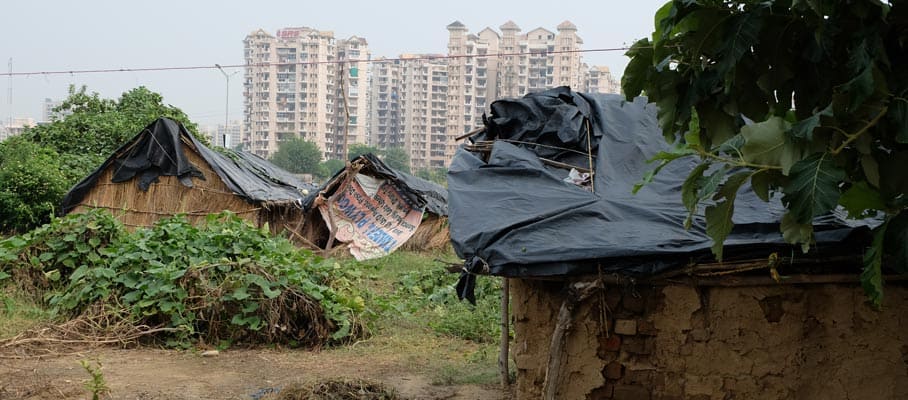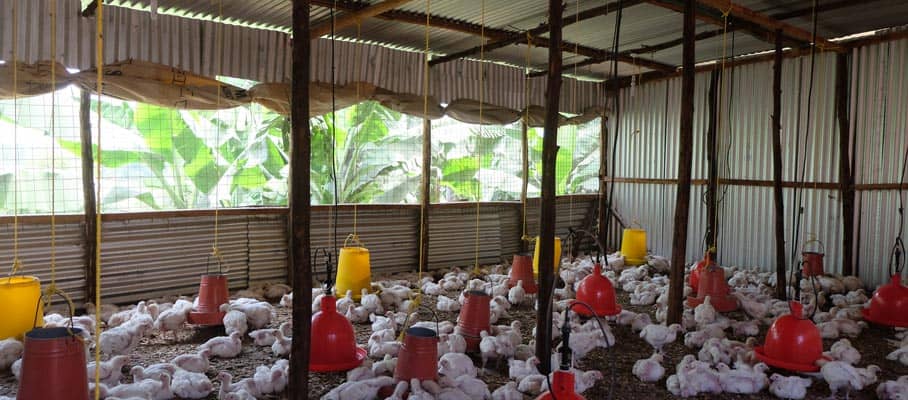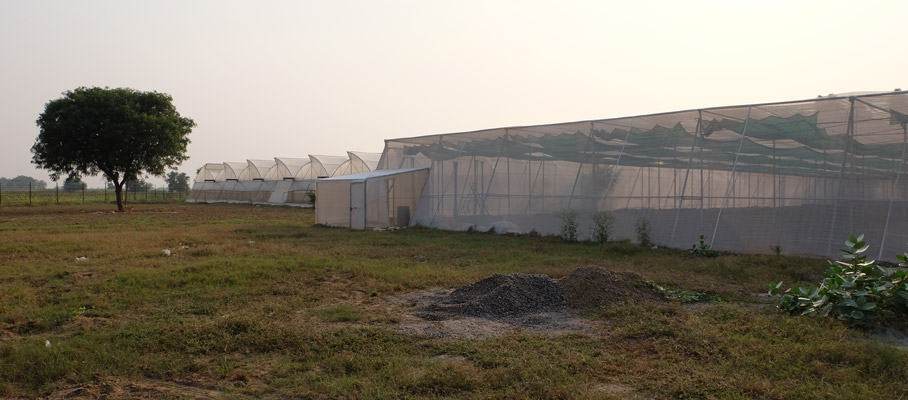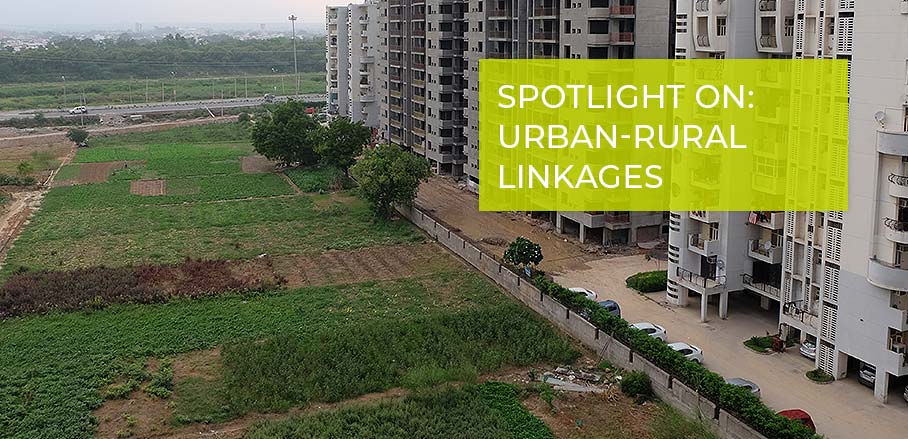Thinking Together Urbanisation and Agriculture: What do Farmers do Under Rapid Urban Growth?
The global debate on agriculture under urbanisation has often focused a priori on the replacement of agricultural uses by built-up space. It thereby often overlooks new opportunities for agriculture at the urban periphery.
Urbanisation and Agriculture: Two Stories
Kavita lives with her family in a makeshift hut at the outskirts of India’s fast-growing capital city Delhi. She explains that her family had come to this place a few years ago, when her husband was given this piece of land by the owner – who was known to some people in his home village in central India – to grow vegetables and sell them on the local market. They share the profit of the family’s work with the owner of the land. She is very much aware that this is a temporary collaboration, as the owner is keen to sell the land. He used to be a ‘big’ farmer, Kavita explains, but he has become ‘super rich’ by selling land – now, he is a politician and businessman.

Marginal farmers making a living at the outskirts of Faridabad near Delhi, India © Alexander Follmann
Joseph lives with his wife at the outskirts of Nyeri, a mid-sized, fast-growing city in central Kenya. He has recently retired from a government job. He has bought the small plot on a former macadamia plantation at the urban periphery about a decade ago. The area developed into a kind of ‘suburban’ residential area for middle-class residents. Recently, Joseph has invested his savings into two stables to fatten chicken in his backyard. He explains that he sells them to supermarkets. He has never been a farmer, but his wife knows a lot about farming and fattening chicken brings good money to improve his pension.

Peri-urban chicken farming in Nyeri, Kenya © Alexander Follmann
These two examples, while fictional, showcase the two dimensions of urbanisation and agriculture. Stories of marginal farmers – like Kavita – trying to make a livelihood, but getting dispossessed in the process of urbanisation are well-known. In contrast, Joseph’s story of investing into a small agricultural business trying to benefit from the increasing demands for more high-value food – such as animal products, fresh fruit, and vegetables – is less familiar. However, both stories can probably be told a million times.
Challenges to Urban und Peri-Urban Farmers
Existing research indicates that rapid urbanisation, and the simultaneous conversion of fertile agricultural land into built-up urban areas is a great challenge especially for land-insecure farmers, who lease land or are without any formal land titles. In contrast, land-secure farmers, who have formal land titles, can sell their land or get compensated. Land-secure farmers can also make use of their land by intensifying and commercialising their farming business.
Farming is competing with a whole range of other urban uses, and agricultural land is seldom protected. Informal land arrangements and transactions dominate. Three land-related spatiotemporal responses of farmers can be identified, with the processes often linked:
- abandonment of agriculture in areas with high urban development pressure and land speculation;
- agricultural intensification in agriculturally favourable locations (for example wetlands and along rivers), which are often unfit for urban development;
- spatial expansion of agriculture further out of the city, farmers getting pushed out of the city shift to peripheral locations.
Water scarcity is another challenge for peri-urban farmers. Yet, under some conditions, urbanisation improves water infrastructures (such as piped water, and treated waste water for irrigation). Some farmers might benefit from improved access to water.
Opposing trends are also reported for agricultural labour: One the one hand, peri-urban farmers often face labour scarcity and increasing labour costs (competition from other sectors), as especially younger generations often aim to get out of agriculture. Increasing labour costs pressure farmers to adapt farming methods and choice of crops toward less labour-intensive production. Producing high-value agricultural products is another option to compensate for increasing labour costs. Green and net houses are material manifestations of these processes of agricultural intensification.

Green and net houses at the urban periphery of Delhi, India © Alexander Follmann
On the other hand, rural-urban migrants – as indicated in both introductory stories – may bring farming skills to the city, and finding a job outside of agriculture is often very difficult for them. These agro-skilled newcomers supply new – sometimes seasonal – labour to peri-urban agriculture.
Urbanisation and Agriculture: Complex Relations
In sum, existing research on agriculture at the urban periphery across the Global South suggests co-occurring trends of replacement, expansion, and intensification. The specific situation of farmers, thus, greatly differs across countries, regions, and cities. Often, we find divergent trends even when comparing peri-urban areas of one city. In many cases, (former) farmers are not passive spectators, but are rather actively involved in the urbanisation process – as the owner of the plot of land that Kavita and her family use.
These complexities of agro-urban relations pose multiple, interlinked governance challenges. So far, the majority of research has focused on the effects of urban growth on farmers rather than foregrounding their responses. Policy recommendations mainly concentrate on regulative policies to save agriculture from (informal) rapid urban growth. Yet, urban and peri-urban agriculture (UPA) is (still) viewed as backwards by many city planners, and governments try to eradicate (informal) farming activities in and around the city.
Peri-urban agriculture plays a multi-functional role; it is contributing to urban food security and urban sustainability through ecosystem services and by closing resource cycles. Thus, there is a need to revise existing urban policies to integrate and support peri-urban agriculture.
At global policy debates, peri-urban agriculture is promoted to achieve the Sustainable Development Goals of “Zero Hunger” (SDG 2) and “Sustainable Cities and Communities” (SDG 11). Yet, these understandings are often not reflected in urban policies and actions on the ground.
Future research may address multi-dimensional questions of governance and informality of UPA to both control and enable UPA in cities of the Global South. Planners and policymakers must rethink existing policies in terms of spatiotemporal dynamics, multidimensional complexity, and intra-urban variations.
